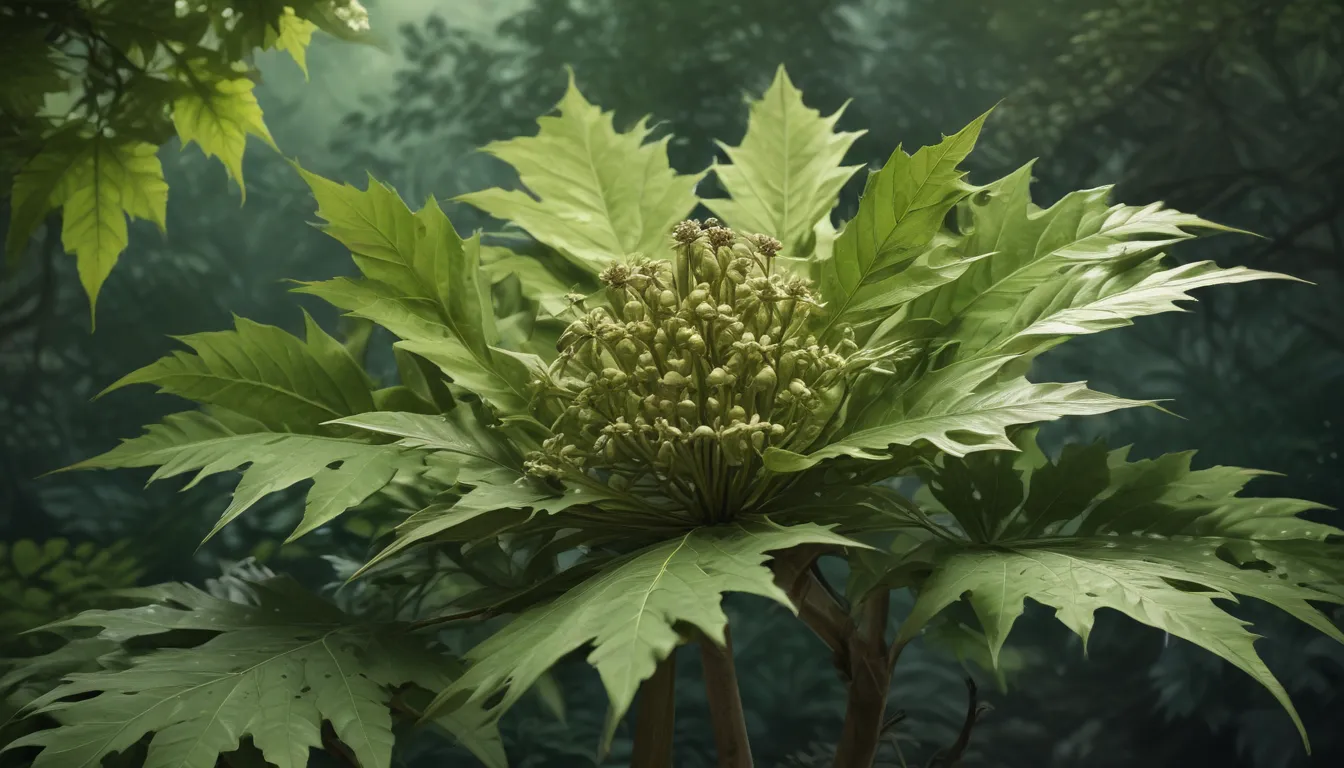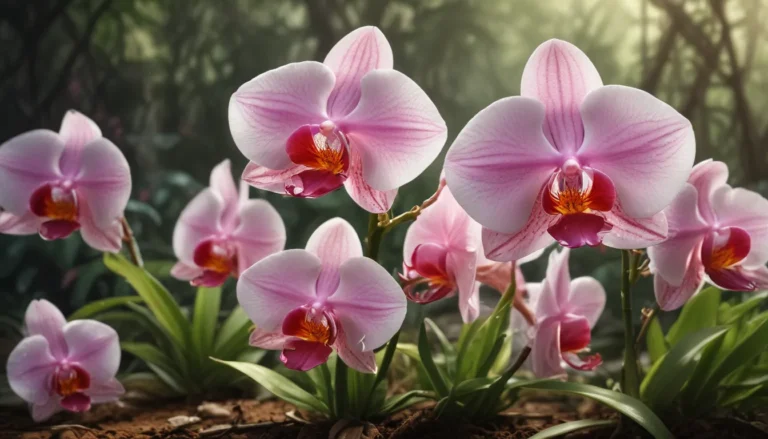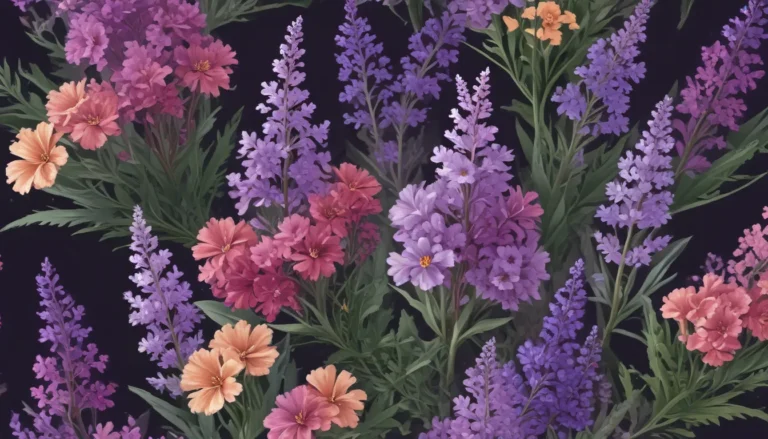The pictures we use in our articles might not show exactly what the words say. We choose these pictures to make you interested in reading more. The pictures work together with the words but don’t take their place. The words still tell you the important facts.
Are you ready to embark on a botanical journey that will leave you mesmerized by the captivating beauty of Fatsia japonica? This versatile plant, native to Japan, is more than just a decorative addition to your garden or indoor space. With its lush and glossy leaves, Fatsia has a unique charm that appeals to plant enthusiasts worldwide. Join us as we unravel 11 intriguing facts about Fatsia that will spark your curiosity and deepen your appreciation for this remarkable plant.
Exploring the World of Fatsia
Native Roots in Japan
Originating from the dense forests of Japan, Fatsia thrives in the temperate climate and moist conditions of its natural habitat. This plant's journey from Japan to the Western world in the 19th century has captivated gardeners with its ornamental value and unique characteristics.
Evergreen Elegance
As an evergreen shrub, Fatsia retains its lush green foliage all year round, making it a perfect choice for adding year-round beauty to your garden or indoor space. Its glossy leaves, measuring up to 12 inches in diameter, create a dramatic display of greenery that is hard to resist.
Adaptable and Resilient
One of the remarkable qualities of Fatsia is its adaptability to various conditions, from full sun to partial shade. This versatility makes it an ideal plant for both indoor and outdoor settings, offering a touch of exotic beauty wherever it is placed.
Unveiling the Beauty of Fatsia
Charming White Flowers
While Fatsia is primarily known for its foliage, it also produces small white flowers in late summer or early fall, adding an extra touch of beauty to this already stunning plant. These delicate blooms enhance the overall aesthetic appeal of Fatsia and attract pollinators to your garden.
Low-Maintenance Marvel
For those seeking a plant that requires minimal care and attention, Fatsia is the perfect choice. Known for its resilience and ability to withstand neglect, this plant is an ideal option for busy gardeners looking to add a touch of greenery to their space without extensive maintenance.
Deer-Resistant Delight
Living in an area with deer populations can be challenging for gardeners, but Fatsia offers a solution. The plant's foliage is typically unappealing to deer, making it a reliable choice for regions where deer may pose a threat to your garden plants. Enjoy the beauty of Fatsia without the worry of deer damage.
Embracing the Versatility of Fatsia
Medicinal Marvels
In traditional Japanese medicine, various parts of the Fatsia plant have been used for their medicinal properties. The leaves and roots are believed to have anti-inflammatory and pain-relieving effects when prepared as herbal remedies, showcasing the plant's multifaceted benefits beyond its ornamental value.
Propagation Perfection
Want to expand your Fatsia collection? You'll be delighted to know that propagating Fatsia is relatively simple. Whether through stem cuttings or dividing the plant at the root, you can easily increase your Fatsia population and share the beauty of this plant with others.
Embracing the Charm of Fatsia
Fatsia japonica, also known as Japanese Aralia, is a captivating plant that offers more than just visual appeal. From its adaptability and resilience to its medicinal uses and ease of propagation, Fatsia continues to intrigue and amaze plant lovers around the world. Whether you're looking to enhance your garden with a low-maintenance beauty or explore the therapeutic properties of this plant, Fatsia is a versatile addition that will enrich your botanical experience.
Conclusion
Fatsia japonica stands out as a fascinating and versatile plant that appeals to gardeners and plant enthusiasts for its unique qualities and enchanting beauty. From its origins in Japan to its adaptability in various climates, Fatsia continues to captivate with its striking foliage and easy care requirements.
In this exploration of 11 intriguing facts about Fatsia, we've uncovered its natural habitat, distinctive features, and potential benefits for both gardens and indoor spaces. Whether you're a seasoned gardener seeking a new addition to your collection or a curious novice eager to learn more about plants, Fatsia offers a world of wonder waiting to be discovered.
Embark on a botanical adventure with Fatsia and experience the magic it brings to your surroundings. With its ability to thrive in different environments and enrich your space with beauty and wellness benefits, Fatsia is sure to become a cherished part of your plant collection.
FAQs
Q: How tall does a Fatsia plant grow?
A: Fatsia plants can grow between 3 to 10 feet tall, depending on the variety and growing conditions, making them suitable for various spaces.
Q: Does Fatsia require a lot of sunlight?
A: While Fatsia can tolerate low light conditions, it prefers bright, indirect sunlight to thrive and maintain its health.
Q: How often should I water my Fatsia plant?
A: Fatsia plants prefer consistently moist soil, so water them when the top inch of soil feels dry to the touch, ensuring not to overwater to prevent root rot.
Q: Can Fatsia be grown indoors?
A: Yes, Fatsia is well-suited for indoor cultivation, thanks to its ability to thrive in low light conditions and enhance indoor spaces with its lush foliage.
Q: How do I propagate Fatsia?
A: Fatsia can be easily propagated through stem cuttings or by dividing the plant at the root, providing an opportunity to expand your Fatsia collection with ease.
Let the enchanting qualities of Fatsia inspire your botanical endeavors and bring a touch of magic to your garden or home. Dive into the world of Fatsia and unlock the wonders that this remarkable plant has to offer, from its decorative allure to its inherent resilience and natural benefits. Explore, learn, and grow with Fatsia as your trusted companion in the vibrant world of plants.






